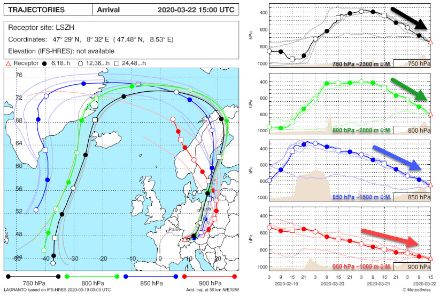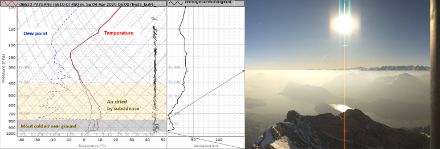Service Navigation
Search
Inside an area of high pressure, the air moves downwards over a large area. In order to even out a pressure difference at ground level, the wind in the layers of air close to the ground blows from the centre of the high-pressure area in the direction of the lower pressure. The Coriolis effect influences the movement of wind by causing it to deviate from a straight path when flowing from areas of high pressure to areas of low pressure. As a result, the wind circulates in an anticyclonic manner around high-pressure regions (rotating clockwise in the Northern Hemisphere).
Large-scale downward movement of an air mass: Subsidence
As air layers near the ground disperse within the high-pressure area, adjacent parcels of air must flow in to fill the resulting gaps, since airless space cannot exist in the troposphere. This large-scale downward movement of an air mass is known as subsidence, and is a process that has a significant influence on the weather.
A parcel of air warms up as it sinks, due to the increases in air pressure. Warm air can hold more moisture than cool air, which means that the relative humidity of the air decreases as the air moves downwards. In other words, the air mass dries out as it sinks.

The impact of subsidence on the weather
As a rule, the sinking air mass results in a cooler air mass in the layers closer to the Earth’s surface (the so-called “boundary layer”) being separated from the warmer air mass at higher altitudes. This boundary layer, in which the temperature increases with altitude, is known as an inversion. In the context of subsidence, the term “subsidence inversion” is used, as the cause of the inversion is the wide-ranging downward movement of an air mass.
In the six months around summer, the weather conditions described above give rise to dry, calm and clear weather conditions, with just a few flat cumulus clouds, or even completely cloudless skies. In the six months around winter, the layer of air just above the Earth’s surface beneath a subsidence inversion is cold and often damp.
